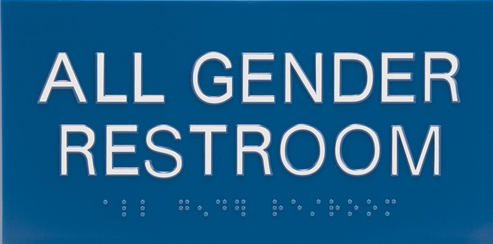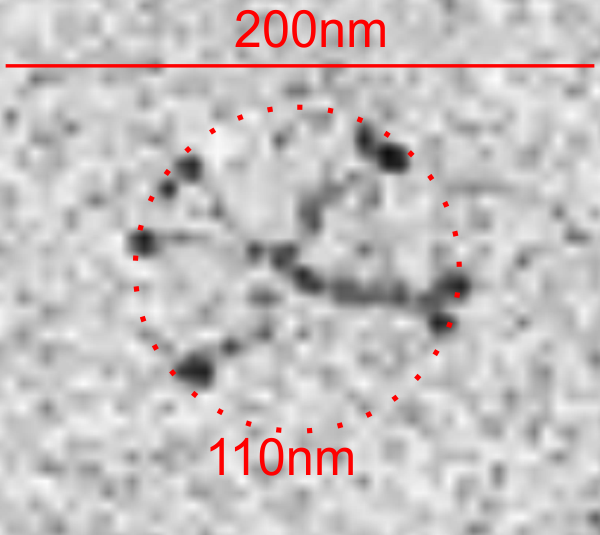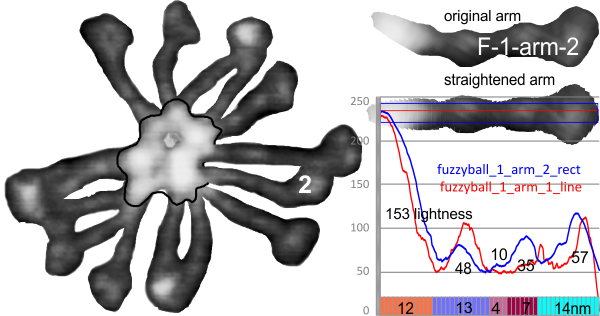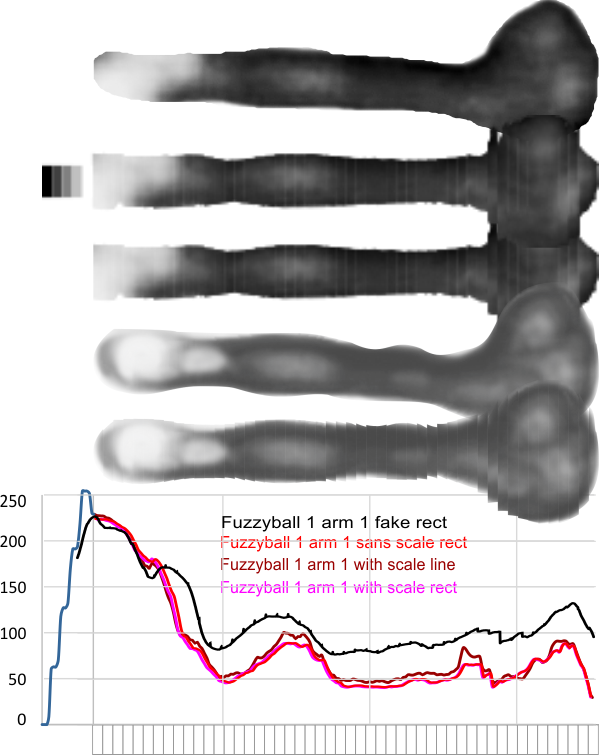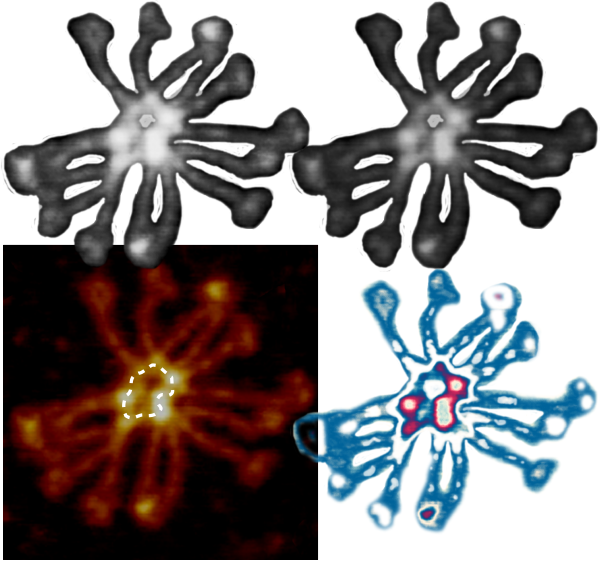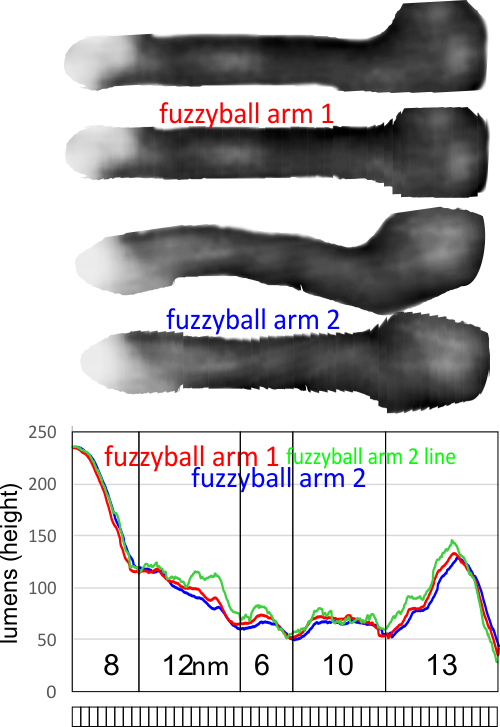Luminance: This is a basic question – that is how to define (label and measure) the brightness or luminance or luminousness of the various greyscale portions of micrographs. This is a question for morphometry – presumably outside the image and photograph world?
Various definitions, interpretations, ideas, statements are given freely on the internet — but how does one really define the brightness – or height of bright areas defining molecular structures in the digital signature of atomic force micrographs. I am looking for some reasonable way to quantify the brightness (in terms of grayscale pixels with a 0 – 256 level) of images of surfactant protein D. (these fun images show luminance and chrominance). It will be the pervue of artificial intelligence (as the technology becomes suitable for scanning large numbers of microscopic fields and “learning” how to classify organelles and molecules.

1. Here we have one definition: Luminance is then a simple function of the number of photons of the specific wavelength interval (corresponding to red, green, or blue) that the pixel receives This means that color is obtained by merging the luminance values from adjacent pixels using computational algorithms, in a process that is called compositing (Fig. 5.2). I am considering this irrelevant to greyscale.
2. And another definition: To measure the total radiation, which includes both reflection and emission of an area receiver, a photometric measure called the luminance is used…. in the same URL, also to quantification of greyscale in micrographs.
3. And from an additional article from science direct: Luminance and Contrast —Luminance is defined as the intensity of light from the visible spectrum per unit area traveling in a given direction (usually expressed in candelas/meter2 [cd/m2]). I dont really like this definition for greyscale either since i don’t see anything traveling in any direction (haha).
4. And a very simple definition: the state or quality of being luminous. Also called luminosity. The quality or condition of radiating or reflecting light: the blinding luminance of the sun. Optics:the quantitative measure of brightness of a light source or an illuminated surface. The brightness might also be called lightness. If the definition of HSL is as follows:
Hue is a degree on the color wheel from 0 to 360. 0 is red, 120 is green, 240 is blue.
Saturation
Saturation is a percentage value; 0% means a shade of gray and 100% is the full color.
Lightness
Lightness is also a percentage; 0% is black, 100% is white.
The only adjustment here is that greyscale of 0-256 would have to be converted into percent black being 0 and 256 bing 100%. This actually might be a good way to control for the difference in contrast in different micrographs. I will give this some tests…. because it occurs to me that when I plot the LUT using Image J one would be advised to fix a given beginning and end, maybe a small gradient map to each plot to the allow that the different in contrast to be normalized.
5. And from Google: Luminance is a photometric measure of the luminous intensity per unit area of light travelling in a given direction. It describes the amount of light that passes through, is emitted or reflected from a particular area, and falls within a given solid angle. The SI unit for luminance is candela per square metre (cd/m2) — also clearly irrelevant to finding an internal standard and name for greyscale plots.
So in a sense the luminance (which I have assigned to a scale of 0 – 256) would be a digital value of the amount of light reflected “reflected” in quotes, and registered by ImageJ in an arbitrary scale. Further, since there is no color in these images (converted to greyscale by me sometimes, and sometimes by the authors of the publications), then “chrominance” ,which apparently is a real word, does not apply, and luminance is just a matter of “brightness”. The use of what is currently in the literature would possible be HSL. Hue, saturation and lightness.
6. and who knew Brightness was subjective: and i quote “Luminance is the luminous intensity, projected on a given area and direction. … Brightness is a subjective attribute of light”
7. This group has chosen to use a second descriptor: luminance factor. [′lü·mə·nəns ‚fak·tər] (optics) The ratio of the luminance of a body when illuminated and observed under certain conditions to that of a perfect diffuser under the same conditions.
8. so perhaps Luminousness is a better term. Luminous has a very simple definigion — means full of or giving off light: suggesting here the words “digital luminousness” haha… perhaps that is too hard to say fast, many times in succession.
So one must conclude that some qualifier of the word luminance is what needs to used when describing the relative “lightness” or “brightness” in greyscale in morphometrics of organelles and objects in a micrograph.
This plot (below) then is an attempt to find a way to quantify tip height in AFM, and uses greyscale to do so, and also nm as a measure of length of the monomer. If you begin at the red area and see that it is about 14nm in width and total of 193luminance points in height it represents the center of the SP-D dodecamer, the N terminus (here just one side of the two that come together to form the dodecamer (only one monomer shown in this plot> Thereafter there are three or four (more often just 3) smaller peaks (a peak defined as a minimum distance from peak to valley of 9 luminance points (0-256) and then on to the last peak with is the carbohydrate recognition domain. The plot below is a summary peak-ness of the trimeric unit that makes up an SP-D dodecamer. 
I think i will try to use a square (17×17 px) greyscale standard at the beginning of all the LUT plots that i do, then in excel i can use the internal control numbers to try to control for variations in greyscale (contrast and lightness) in micrographs.

